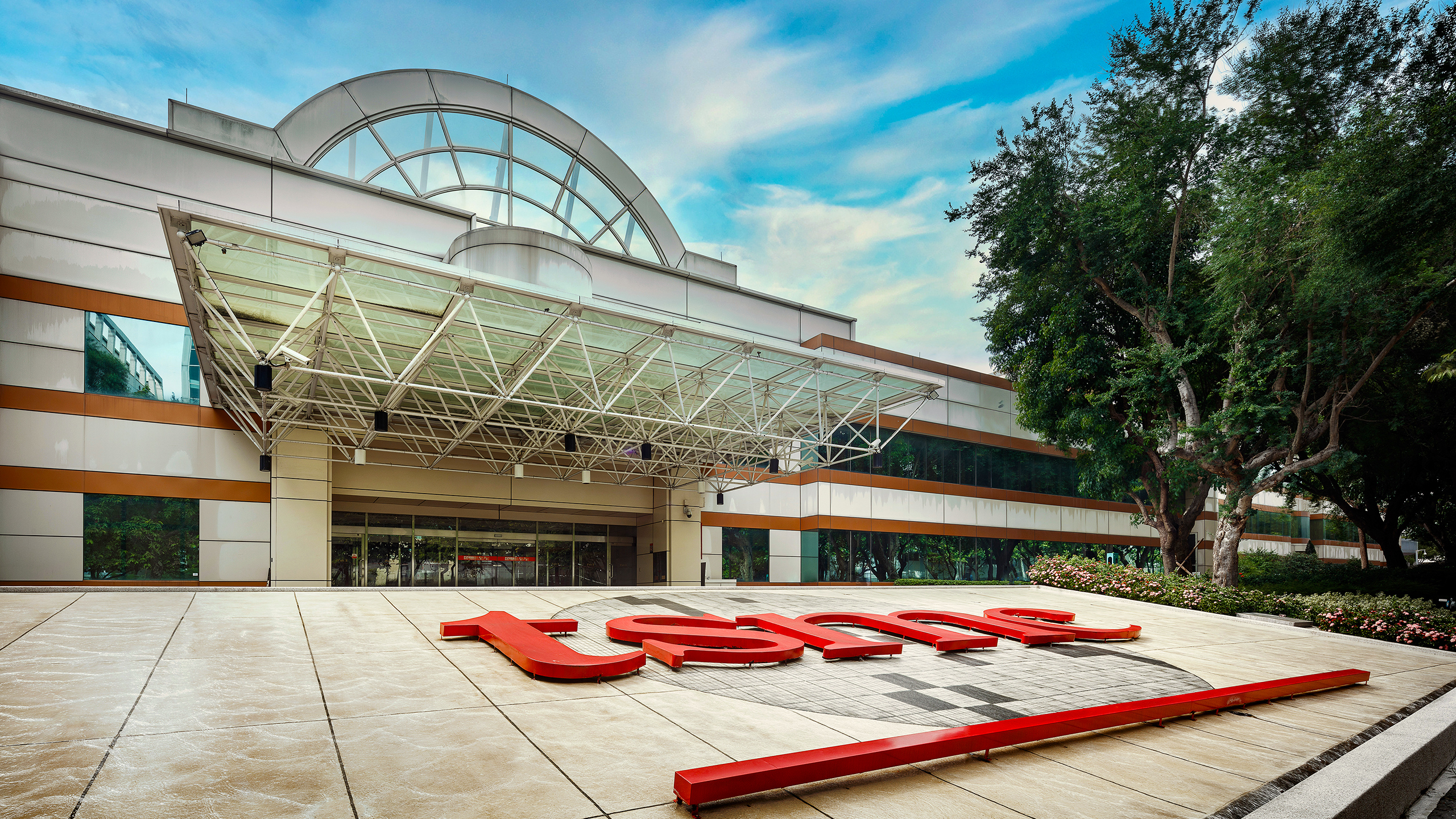TSMC and Intel rumors stoke Taiwanese fears of losing its 'Silicon Shield'
TSMC and Intel rumors spark media hysteria in Taiwan.

The rumor that the U.S. government is allegedly pushing a joint venture between Intel and TSMC has sparked an outcry in Taiwan about the chance of the country losing its 'Silicon Shield,' a theory that TSMC's crucial role in global chip manufacturing would prevent China from invading, or spur other countries to rush to its aid in the event of war. Naturally, the rumored partnership would impact TSMC’s strategy and Taiwan's politics. With such a JV, Taiwan would no longer be the world’s key supplier of advanced processors.
"'Media reports' gone wild," wrote Dan Nystedt, vice president at TriOrient, an Asia-based private investment company, in an X post. "Headlines from Taiwan [are] from pro-Chinese Communist Party/anti-America media."
Indeed, Taiwanese media treat TSMC and the country as one, warning that TSMC will become partly an American company and Taiwan will lose its ‘Silicon Shield.’ Nystedt pointed out three headlines:
- No.1 foreign analyst warns: be afraid for TSMC! The whole bowl is going to be taken away. [Link]
- Shocking report: The U.S. asks TSMC to save Intel with a joint venture fab, technology transfer: Taiwan is finished! [Link]
- Rivals become teammates? TSMC and Intel are joining forces to become US Semiconductor (USSMC). [Link]
Most stories rebuff the original report and add commentary that the joint venture will not benefit TSMC but instead harm the company and the country. Some even try to drag in unrelated facts as indirect confirmations supporting the joint venture. Earlier this month, TSMC’s board of directors held its first-ever Q1 meeting in the U.S. instead of Taiwan. While business media attributed this to the company’s preparations to formally kick off mass production of advanced processors at Fab 21 in Arizona—a first in TSMC’s history—Taiwanese media claimed that the meeting was tied to Trump’s possible return to the Oval Office.
However, while the media tends to stoke fears in headlines, it also quotes analysts who believe that, given the onshoring trend, TSMC's decision to build production capacity outside Taiwan was inevitable. Nonetheless, even these analysts believe that TSMC may experience unprecedented political pressure in the U.S.
Yang Yingchao, chairman of Kirkland Capital, told China Times News Network that TSMC’s Fab 21 project in Arizona has significant political implications, as setting up a chip production site worth $65 billion in the U.S. is commercially impractical for TSMC. Producing chips in Taiwan is far more cost-effective due to lower expenses and a larger workforce of engineers. Additionally, since chips are small and easy to transport, there is little logistical benefit in manufacturing them in the U.S. However, it has become nearly impossible for TSMC to avoid expanding its production capacity in America now that advanced chip supplies have become a matter of national security and economic prosperity.
Yang Yingchao also doubts the likelihood of the U.S. government imposing a 100% tariff on Taiwan-made chips. He argues that Trump often uses bold threats as leverage in negotiations, citing previous instances where similar tariff threats were eventually dropped. Imposing a 100% tariff on chips would likely increase consumer prices or within the supply chain, ultimately harming the U.S. economy.
Get Tom's Hardware's best news and in-depth reviews, straight to your inbox.
However, Yang remains skeptical of TSMC's business media explanations for holding its board meeting in the U.S., suspecting they are influenced by external pressure rather than actual operational needs. This could imply that the Intel and TSMC collaboration story may have some grounds.

Anton Shilov is a contributing writer at Tom’s Hardware. Over the past couple of decades, he has covered everything from CPUs and GPUs to supercomputers and from modern process technologies and latest fab tools to high-tech industry trends.
-
bit_user I think there's no realistic chance of TSMC IP being transferred to Intel.Reply
I also doubt TSMC is going to put their most cutting edge nodes in the US, as much for practical reasons (i.e. keeping them located in the same place the main R&D is happeing) as much as anything else. Even after a node is deployed, a lot of tuning and refinement is still happening to get yields up and costs down. So, there will necessarily be some delay in these nodes reaching fabs located outside of Taiwan. -
paviko I don't get it. Intel 7 ( Core 13th and Core 14th?) served well against AMD TSMC 4. With X3D exception, which is for gamers, Intel is really good. Also 13900 and 14900 where more like overclocked CPU needed only for top mark scores. 13700, 14700 have good efficency. Now we have Core with TSMC 3 and actually only 285 (equivalent of 14900?) shows much better power charecteristic and even is not fastest. The same was with Apple SoC TSMC 5 vs TSMC 3, not much improvement, in benchmarks only because new instructions are used aka AVX.Reply
Another point is Core architecture that is sooo old. I also don't get why no new arch after 15 years. -
JamesJones44 Reply
Apple silicon has always supported AVX2 via Rosetta 2 translation (aka x86/x64 compiled applications, not aarch64 applications), it does not support AVX-512 on any line. Apple Silicon does support SIMD instructions natively via NEON. As far as I know M4 and M3 lack full SVE/SVE2 support which is somewhat equivalent to AVX-512. Which vectorization instruction set you are referring to as "in benchmarks only because new instructions are used aka AVX"?paviko said:in benchmarks only because new instructions are used aka AVX -
Gururu In current environment there will be no compromise from U.S. about who should lead the space. If we can pull out of Euro allies so easily, Taiwan (or TSMC) is dead in the water.Reply -
bit_user Reply
Zen 4 used TSMC N5 for the CCDs. And you're just focusing on desktop. AMD designs the CCD chiplets for servers, first and foremost. In that realm, there was no contest - Genoa and Siena both trounced their Xeon competitors. It wasn't until Intel launched Sierra Forest (made on Intel 3) that they truly had an answer. However, right after Granite Rapids launched, AMD had Turin and that took us back to a place of AMD leadership. It's only in a minority of specific workloads, like those harnessing AMX, that Granite Rapids can beat Turin.paviko said:I don't get it. Intel 7 ( Core 13th and Core 14th?) served well against AMD TSMC 4.
Intel changes things as they go. I'm sure there's no part of their latest cores that hasn't been redone several times, since the Nehalem cores launched way back in 2008.paviko said:Another point is Core architecture that is sooo old. I also don't get why no new arch after 15 years.
Also, I consider the E-cores to be a newer microarchitecture. I think Tremont was the last massive overhaul, but Gracemont and Skymont were pretty major updates. -
bit_user Reply
Only by translating them to 128-bit NEON ops. As you said, Apple still doesn't meaningfully support SVE!JamesJones44 said:Apple silicon has always supported AVX2 via Rosetta 2 translation (aka x86/x64 compiled applications, not aarch64 applications), -
NinoPino Taiwan will loose his "shield", only at the moment they will decide to mass product the most advanced node in the Arizona facility.Reply
I hope TSMC management, and Taiwan government, will be able to resist to the U.S. government pressure for transferring the leading edge production to the U.S.A. -
Mcnoobler Intel in the US... or TSMC in Taiwan/AZ...Reply
As a US citizen, who should I root for... hmmm...
Save Taiwan at all costs. Give them whatever they need!